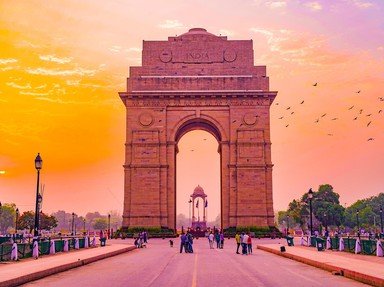Quiz Answer Key and Fun Facts
1. In the midst of calypso drums, glorious sunshine and menacing bowlers, out walked a five-foot-something lad, with a shock of unruly hair and a bat wielded like a rapier, making his debut in international cricket. The fiery West Indian bowling attack threw everything at him, to no avail. He ended up scoring a record 774 runs in the series and changed the face of Indian cricket forever. Who is this master batsman I am referring to?
2. Toward the end of 1970 refugees, in their millions, began flooding the eastern states of India - from which modern country?
3. Which of these weapons of war was used by India for the first time in 1971?
4. A Supreme Court decision in a famous case in 1970, regarding the nationalization of a certain sector of the economy, led to a Constitutional Amendment, which prevented courts from going into the question of compensation in cased of "compulsory acquisition". Which sector of the economy was involved in this case?
5. June 26,1975. The darkest day for Indian democracy. An "Emergency" was imposed by the Congress Government at the centre, ostensibly due to "the breakdown of law and order within the country" and to "protect the country from internal threats". Who was the President who officially signed the Emergency Proclamation?
6. One of the defining cases in Indian legal history, Kesavananda Bharati v. State of Kerala was decided by the Supreme Court of India during this period. What doctrine was first enunciated by the Supreme Court to protect the integrity of the Constitution of India?
7. Which of these infamous acts was passed during the Emergency period in order to give the state enormous powers in maintaining "the integrity of the nation"?
8. India's first nuclear test was conducted in 1974 under the Indira Gandhi government, on May 18, 1974. The code words which indicated that the test had been successful were "_____________ Smiled". Fill in the blank.
9. During the Emergency, the Indian government followed an extreme policy of forcibly sterlizing people in order to curb population growth
10. When elections were announced in 1977 after the ending of the Emergency, Indira Gandhi and her son, Sanjay were both trounced in their "safe" constituencies.
Source: Author
almaster
This quiz was reviewed by FunTrivia editor
bloomsby before going online.
Any errors found in FunTrivia content are routinely corrected through our feedback system.
